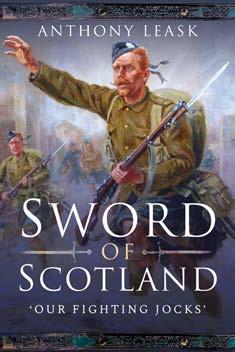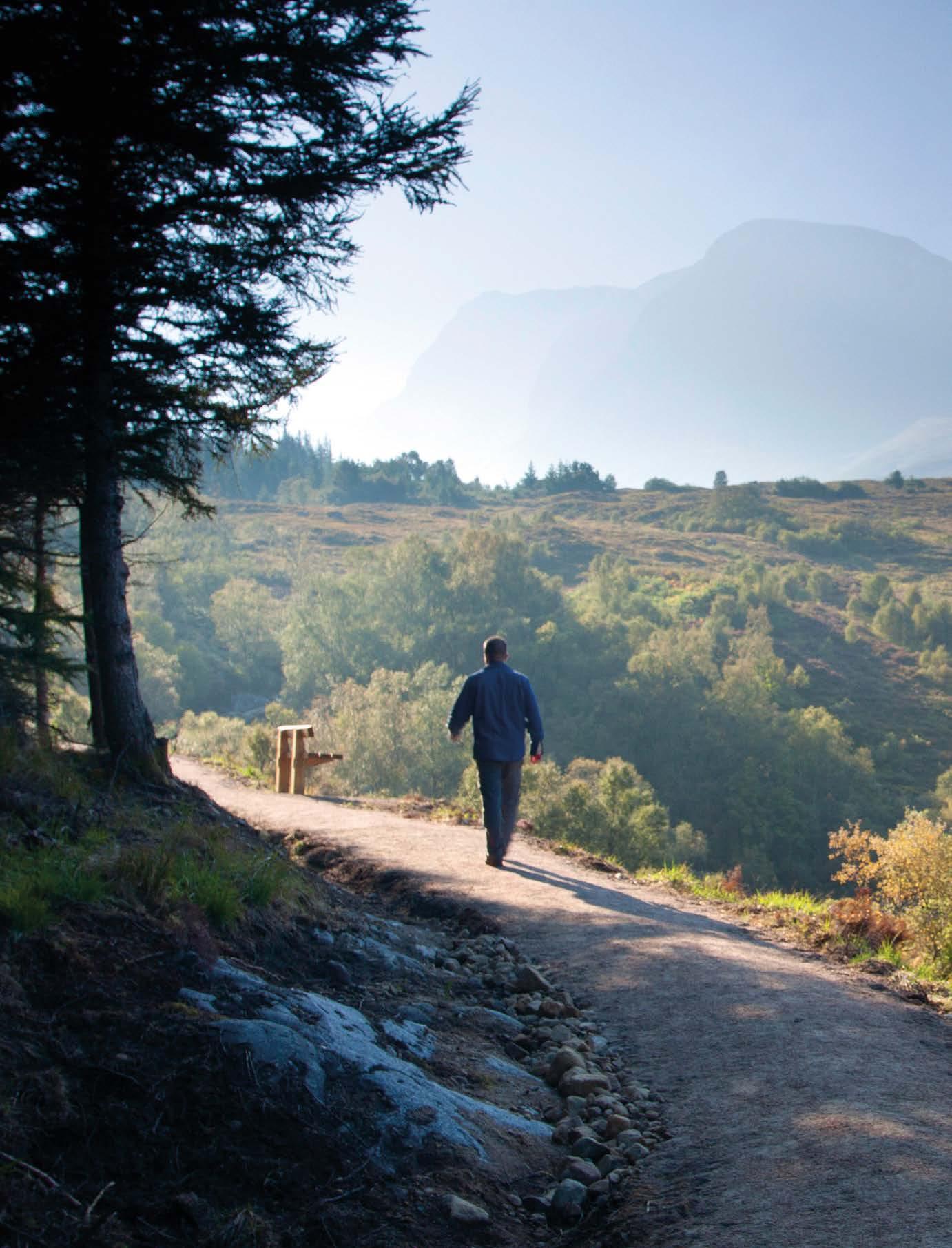
11 minute read
Scotland’s showstopper

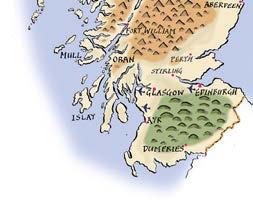
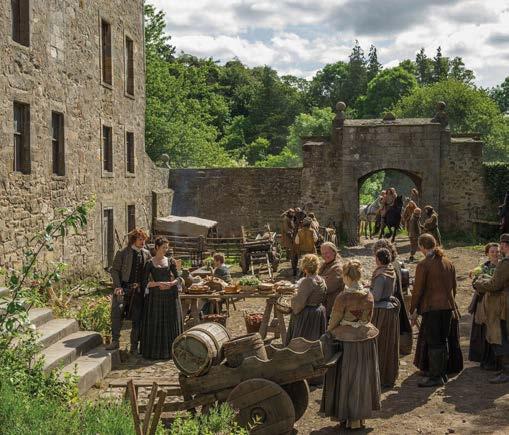
Words by RODDY MARTINE
Today, it may be better known for its Outlander connections, but the history of Hopetoun is worthy of a drama of its own and the house is a guaranteed scene-stealer
© VISIT SCOTLAND/PAUL TOMKINS/EVERETT COLLECTION INC/ALAMY Hopetoun House, its all-embracing wings looming up before your eyes at the end of a long, straight driveway close to the medieval ferry town of South Queensferry, makes quite the fi rst impression. As you approach, there are spectacular views across the Firth of Forth towards the Kingdom of Fife.
The history of the Hopetoun estate is also tantalising. A fortifi ed castle existed on the original Abercorn estate as early as the 12th century, when it was held by Sir William de Graham, ancestor of the dukes of Montrose.
Midhope Castle, built c.1458 by John Martyne, who owned Carden Castle in Fife, also stands within the estate. Sold to LEFT: The 18thcentury Hopetoun Henry Livingstone in 1478, it was rebuilt by Alexander Drummond in House ABOVE: 1587 then signifi cantly remodelled The Outlander by George, 3rd Earl of Livingstone, cast, including Sam Heughan (left), gather in 1664. When John Hope acquired the at ‘Lallybroch’ Abercorn estate in 1678, he raised the height of the existing eastern section and added two more bays on the end. The inscription above the kitchen reads: “Aspirit Coeptis Jesus”, which translates as “May Jesus favour your undertakings”.
A restoration, with new roofi ng and windows, was undertaken in 1962, revealing a Scottish Renaissance beamand-board painted ceiling which, having been restored, has been relocated to the Abbey Strand Historic Scotland bookshop outside the gates of the Palace of Holyroodhouse, in Edinburgh.
Today, the exterior of Midhope Castle will be familiar to fans of the Starz historical television series Outlander, since it serves as Lallybroch (Broch Tuarach), the ancestral home of the drama’s handsome fi ctional hero Jamie Fraser. In the series, Lallybroch is also occupied by Jamie’s sister and her family.
You do need a ticket to visit the exterior of the castle (you cannot go inside) and as Midhope Castle is situated at the centre of a busy farming area on the Hopetoun estate, access to the surroundings is occasionally denied to the general
public for safety reasons. Please CLOCKWISE, check the guidelines before you decide to visit. FROM FAR RIGHT: Hopetoun’s large library; views
The Hope family, which purchased extend across the the Abercorn estate in the mid-17th Firth of Forth; century, were a remarkably acute, fortunate and prolific dynasty. Their Midhope Castle; a statue of General Sir John Hope, 4th story emerges in the 15th century Earl of Hopetoun, with John Hope, a Burgess of in Edinburgh Edinburgh with trading interests in continental Europe.
John’s grandson Thomas was born in Leith in 1573 and studied law, rising to become King’s Advocate in 1626. Of his four sons, two became judges at the Court of Session, the third becoming cupbearer to the King, and the fourth, Sir James (1614-1661), Master of the Mint and a Lord of Session. Sir James was the first to style himself ‘of Hopetoun’, taking the old name of Leadhills in Lanarkshire (it was formerly known as ‘Hope Toun’), which had come into his possession through marriage to its heiress Ann Foulis.
Having developed a serious interest in his wife’s inheritance, Sir James set off to the Low Countries to gain an expertise hitherto unknown in Scotland and from which he later extended the family’s commercial interests into West Lothian. Lead mining from there on in became the basis for the Hope family’s prosperity.
In 1678, James’s son, John (1650-82), purchased the lands of Abercorn on the southern shore of the Firth of Forth from the 4th Earl of Winton and re-named the estate ‘Hopetoun’. Alas, soon afterwards he drowned in the shipwreck of HMS Gloucester, while accompanying the Duke of York, later James VII/II, on a journey to Scotland.
John is said to have given up his seat in the rescue boat to save the future monarch and as a result, his widow, Lady Margaret Hamilton, daughter of the 4th Earl of Haddington, was left with their two young sons to oversee the emerging mansion house under the instruction of the great Scottish architect Sir William Bruce. On his coming of age in 1703, the same year that the first building work was completed, Charles, the eldest son, was created Earl of Hopetoun by Queen Anne, a nod to his father’s sacrifice.
Bruce’s original designs for Hopetoun House followed the Italian style introduced into England earlier that same century – a central pile connected by curved colonnades with forward standing pavilions. The existing west front survives as an admirably restrained and balanced composition.
A zealous supporter of the Act of Union between Scotland and England, the Earl was a man of cultivated tastes who, with his substantial inheritance, set out to copy the splendour of contemporary English country houses. There can be no doubt he had a strong influence on the alterations,

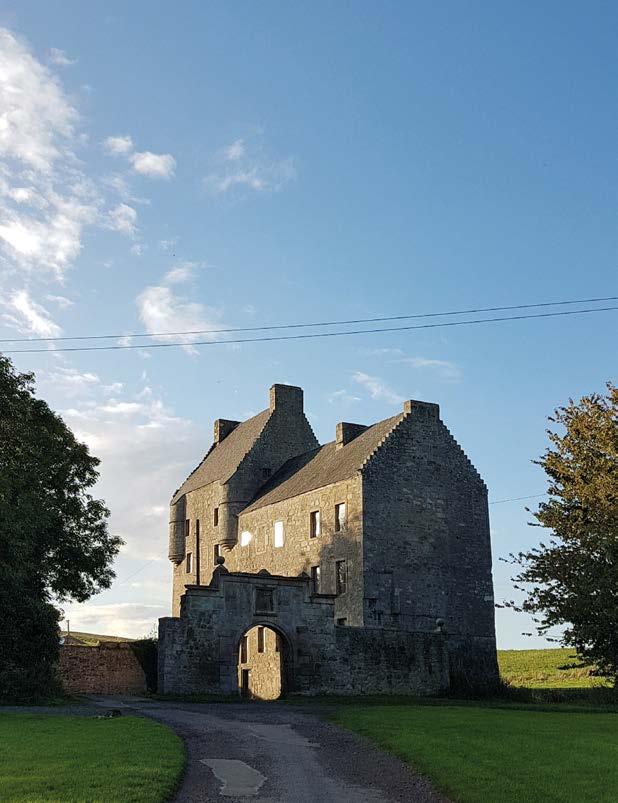
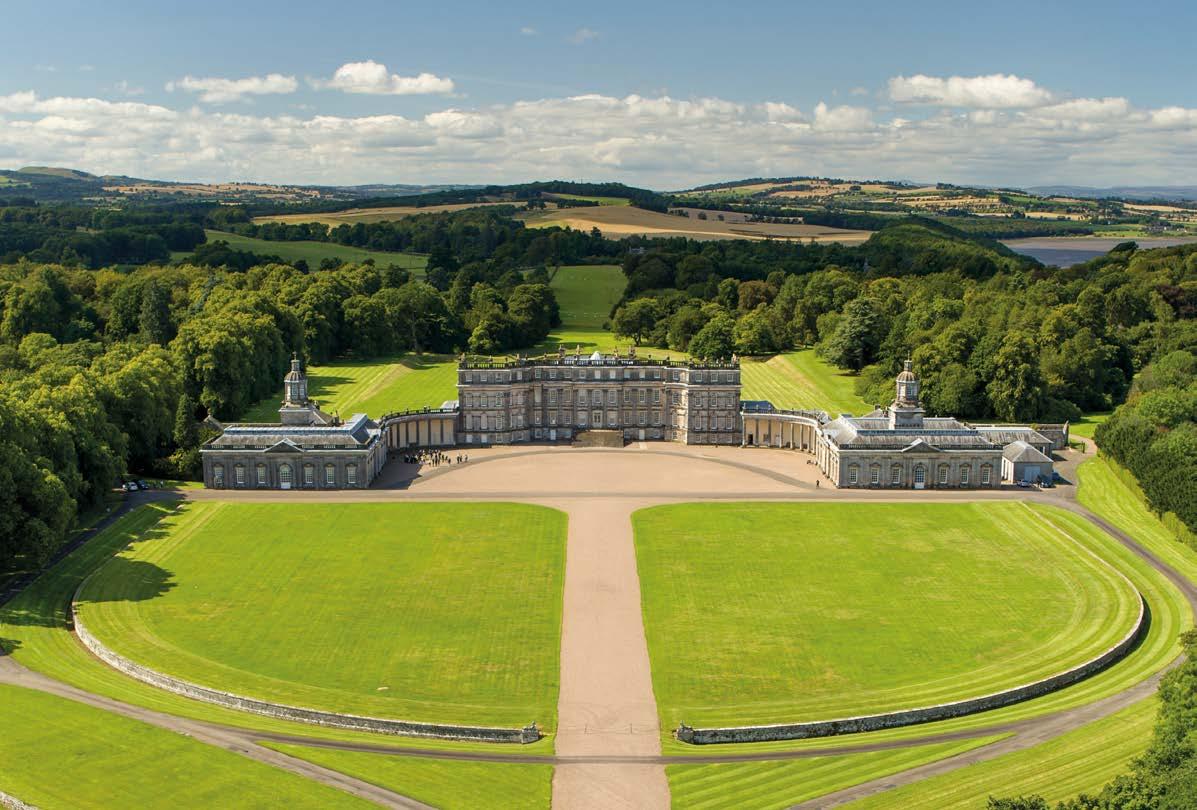
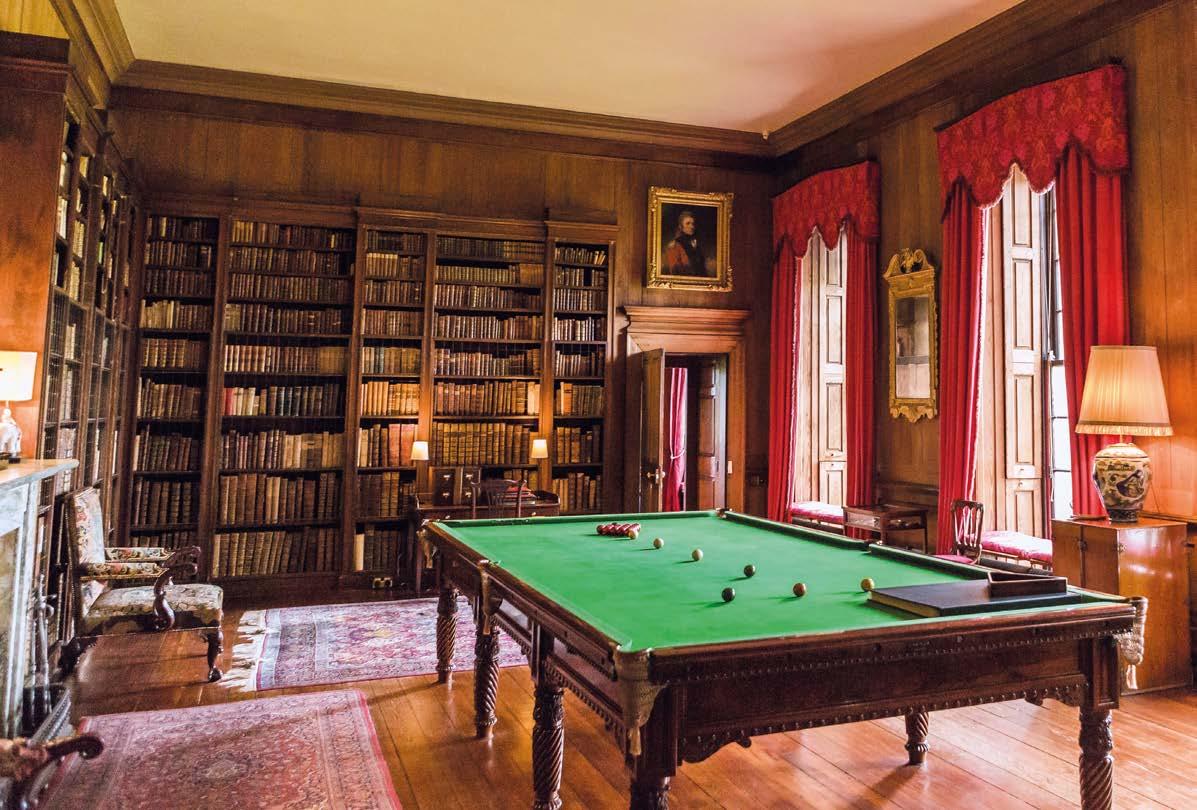

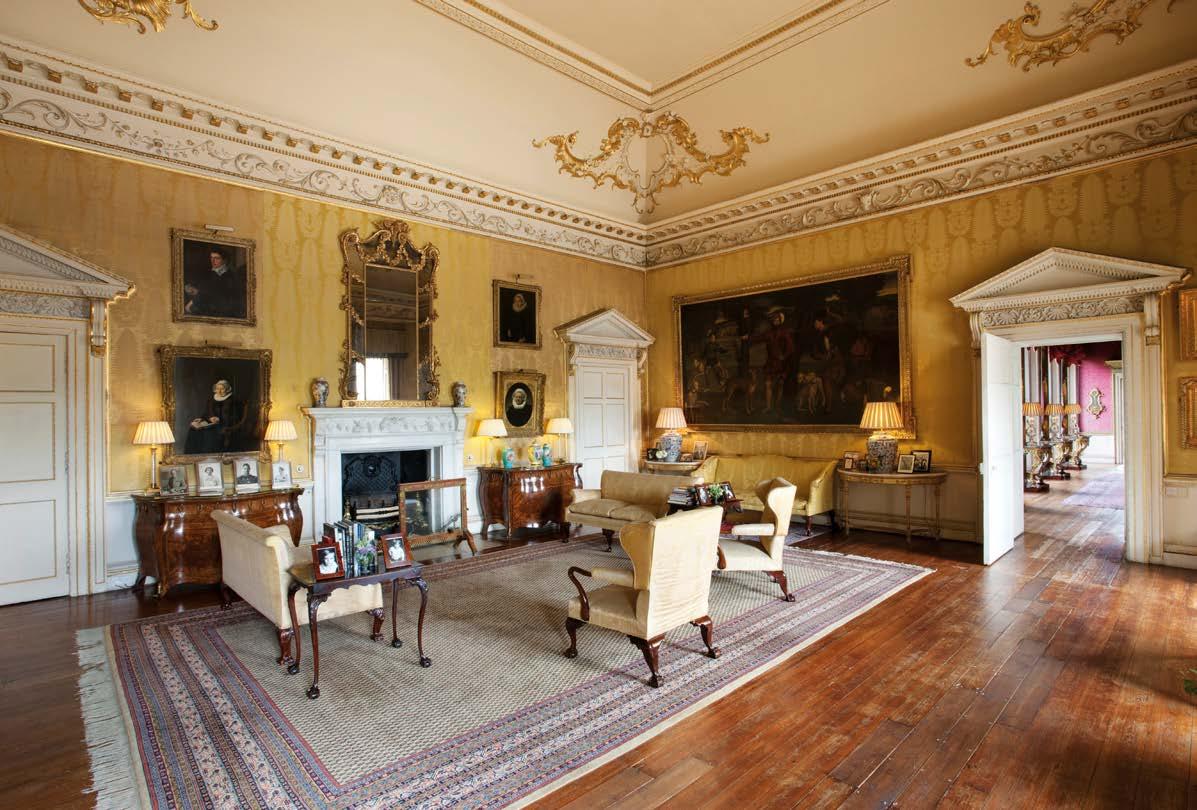

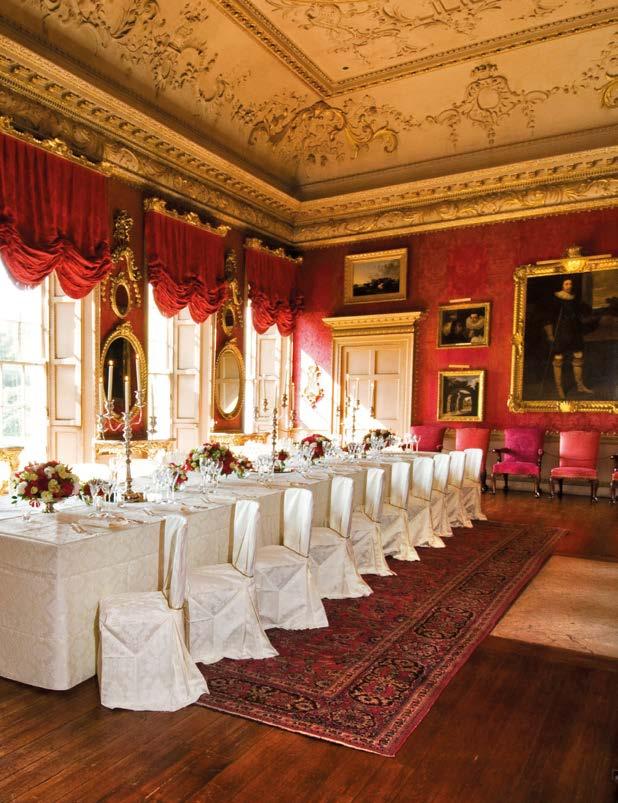
CLOCKWISE, enlargement and additions that were FROM FAR LEFT: introduced 20 years later by his The Yellow Drawing Room; family’s friends, those other iconic Lord Hopetoun at Scottish architects, William Adam the 2012 Hopetoun and his son, Robert. House Horse Trials; the Red Drawing Room; King The 2nd Earl added to the family holdings by purchasing the Ormiston George IV visits estates in East Lothian and was one Hopetoun House of the first Governors of Edinburgh in 1822 Infirmary. The 3rd Earl concentrated on improving his agricultural interests but had no children. Hopetoun was thus inherited by his half-brother, General Sir John Hope who had fought alongside the Duke of Wellington in the Peninsular War. At Hopetoun, he instructed the completion of the State Dining Room and, on one memorable occasion in 1822, entertained George IV to a lunch of turtle soup on the last day of the King’s state visit to Scotland.
Asking for the use of the Earl’s sword, King George knighted Captain Adam Ferguson, Keeper of the Regalia in Scotland, and Henry Raeburn, the distinguished Scottish painter, in the Yellow Drawing Room.
The 5th and 6th earls, although both active in Scottish affairs, mostly concentrated on agricultural improvements close to home. However, John, 7th Earl, having been appointed Governor of Victoria, became first GovernorGeneral of the Commonwealth of Australia and was created Marquess of Linlithgow in 1901.
Victor, 2nd Marquess, held the office of Viceroy and Governor-General of India from 1936 to 1943. Charles, 3rd Marquess served in the British Army and during the Second World War was captured and imprisoned at Colditz in 1940 with the 51st Highland Division.
Adrian, 4th Marquess, has enjoyed a successful commercial career in the City of London and today lives on the estate while his son and daughter-in-law Lord and Lady Hopetoun occupy an apartment in the house which, despite it having become a five-star visitor attraction, remains very much their family home.
Lord Hopetoun, a nuclear physicist and software and systems engineer, explains: “Since 1971, the house and immediate grounds have been owned and run by an independent charitable trust, the Hopetoun House Preservation Trust. Its role is to ensure the future of Hopetoun for public benefit and enjoyment and inspiration through ongoing conservation and education programmes.”
Hopetoun House can be seen in series one and two of Outlander as the home of the fictional Duke of Sandringham, with scenes filmed in the Red Drawing Room. The courtyard behind the Stables Tearoom regularly features as Parisian streets in the second series, and the duel between the Duke and the head of the MacDonald clan was filmed on the Sea
Walk Trail and West Lawn to the RIGHT: The rear of the house. Restoration and conservation are North Tower of Hopetoun House BELOW: The very much at the core of Hopetoun. Garden Room Within the hallway and rooms that are open to the public there are innumerable family portraits, fine artefacts, marble busts and items of furniture, such as a Genoese mid-18th century giltwood pier table with its Florentine sample marble top, and a round table in burr oak by William Trotter.
The Garden Room displays a musical automaton clock manufactured by Jan Henkels of Amsterdam c.1730. A screen with flower plates contains illustrations from The Temple of Flora by Robert John Thornton who dedicated his work to Queen Charlotte, consort of King George II. The gilded wall paintings in the State Bedchamber were by the Edinburgh-based decorator James Norrie and date from 1741-42; the Charter Room, Writing Closet and Libraries are similarly packed with interest.
There are paintings by Rubens, Raeburn and Gainsborough to be seen. Particularly beautiful is the White Satin Bedchamber with its wall hangings; also, the West Ainscot Bedchamber and Anteroom, and the State Apartments – the Yellow and Red Drawing Rooms and the State Dining Room.
The Ballroom in the South Pavilion, with its coved plaster ceiling, Aubusson tapestries, chandeliers and a fine chimneypiece designed by William Adam, has witnessed many a formal ball and gathering and created so many happy memories.
Happy memories are also created through Hopetoun being an immensely popular wedding destination with the completely re-furbished Adam Stables and Carriage Room providing facilities for private and corporate entertaining. Assisted by the popular Ranger Service, Hopetoun’s Education Team provide a range of interactive workshops for school groups throughout the academic year. S
PLAN YOUR VISIT
■ Hopetoun House, just a short distance from Edinburgh, is generally open to day visitors from Easter Sunday through to the end of October. Opening days and times are still to be confirmed for 2021, however they will be published on the website as soon as they are known. Check the website for details on arranging a pre-booked visit to see the outside of Midhope Castle. hopetoun.co.uk
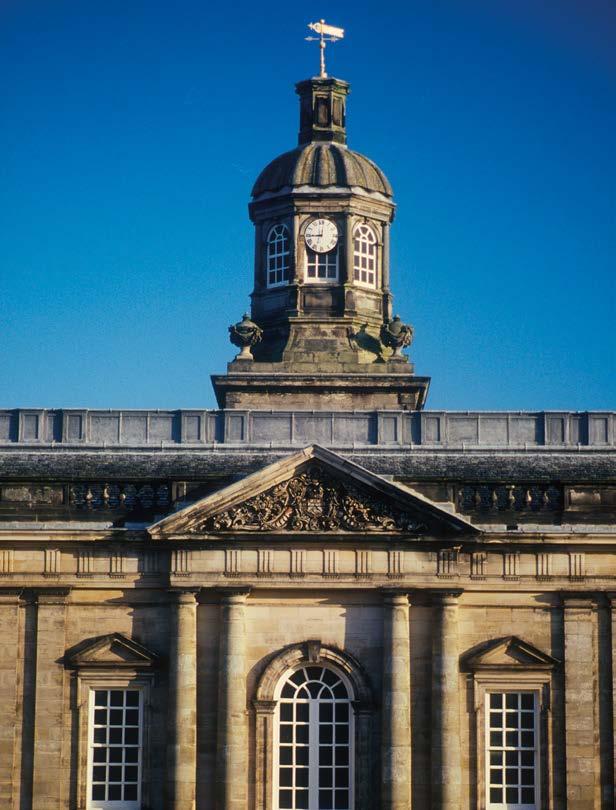

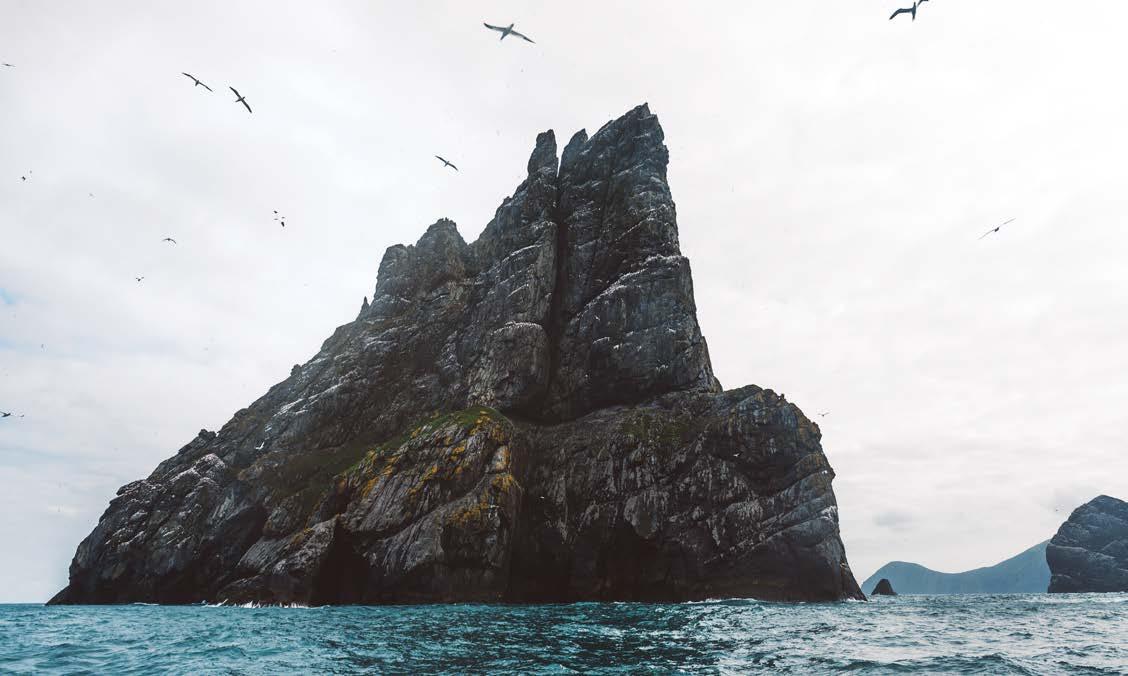
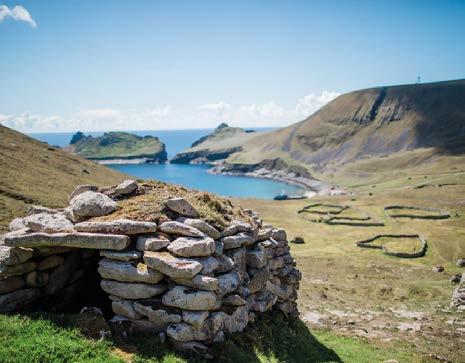
AHOY TO ST KILDA
With Go To St Kilda, you can visit the most remote islands in the UK. Here photographer Ali Horne recalls his memorable trip
TOP LEFT:
Discover the remains of human habitation on St Kilda CENTRE: Travel to the archipelago by boat from the Isle of Skye BELOW: Since 1930, there have been no permanent human residents on St Kilda The Isle of Skye is one of the most visited islands in the whole of the UK for good reason. The landscape is unlike anything else I have explored or seen in any other area around Scotland and cannot be described until you have set your eyes on it. Finding out that it was possible to travel to an even more breathtaking and unique place from these shores was an opportunity I could not resist.
I was fortunate enough to travel to St Kilda, a set of isolated islands 40 miles off the west coast of the Outer Hebrides, in June 2019, while working with Go To St Kilda as photographer of their newest boat, Finn Mara.
The islands are not only a dual UNESCO World Heritage Site, but they are also home to over one million birds, making it one of the most important bird colonies in Western Europe. Many people opt for the day trip to Hirta, the main island, but I was fortuitous to camp on the island for four nights (one more than expected due to the rough seas). With no service or internet access for the duration, it’s a great way to refresh your own batteries and really embrace the cultural and historical aspects of St Kilda to the fullest.
At over 400 metres, the islands have the highest sea cliffs in the whole of the UK, which you get really close to on your return boat journey. It’s difficult to comprehend that locals once climbed them to gather birds eggs to eat.
As a result of the male population leaving for the war or the mainland for work, the elderly and children left behind struggled to cope with this extreme way of life and the challenges of St Kilda’s harsh climate. By 1930 the islands had been evacuated of their final 36 residents.
Highlights from my trip included solitary walks to every edge of Hirta, photographing puffins in their hundreds, witnessing the brutal Scottish west coast weather and discovering the history of the islands and just how the locals survived in such a remote setting. A truly unforgettable trip, and one that I cannot encourage enough. S
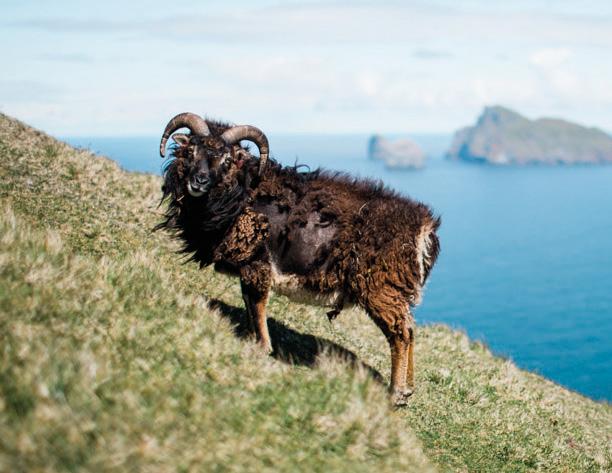
Go To St Kilda trips set off from the Isle of Skye. You can opt for a day trip or a camping adventure of one night or more. The trips are run through the summer months by Go To St Kilda, which also runs trips to the Isle of Harris and to the Small Isles. gotostkilda.co.uk

